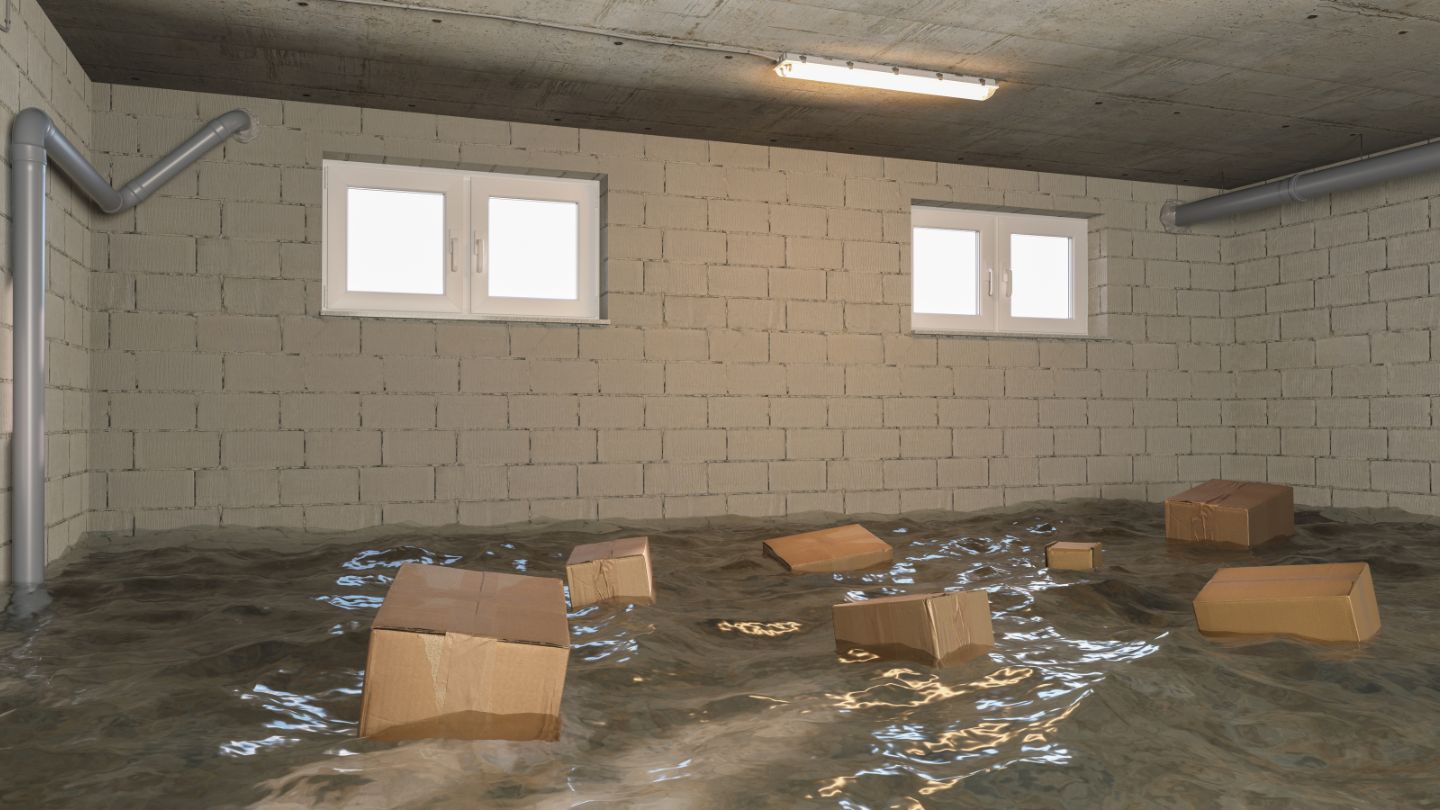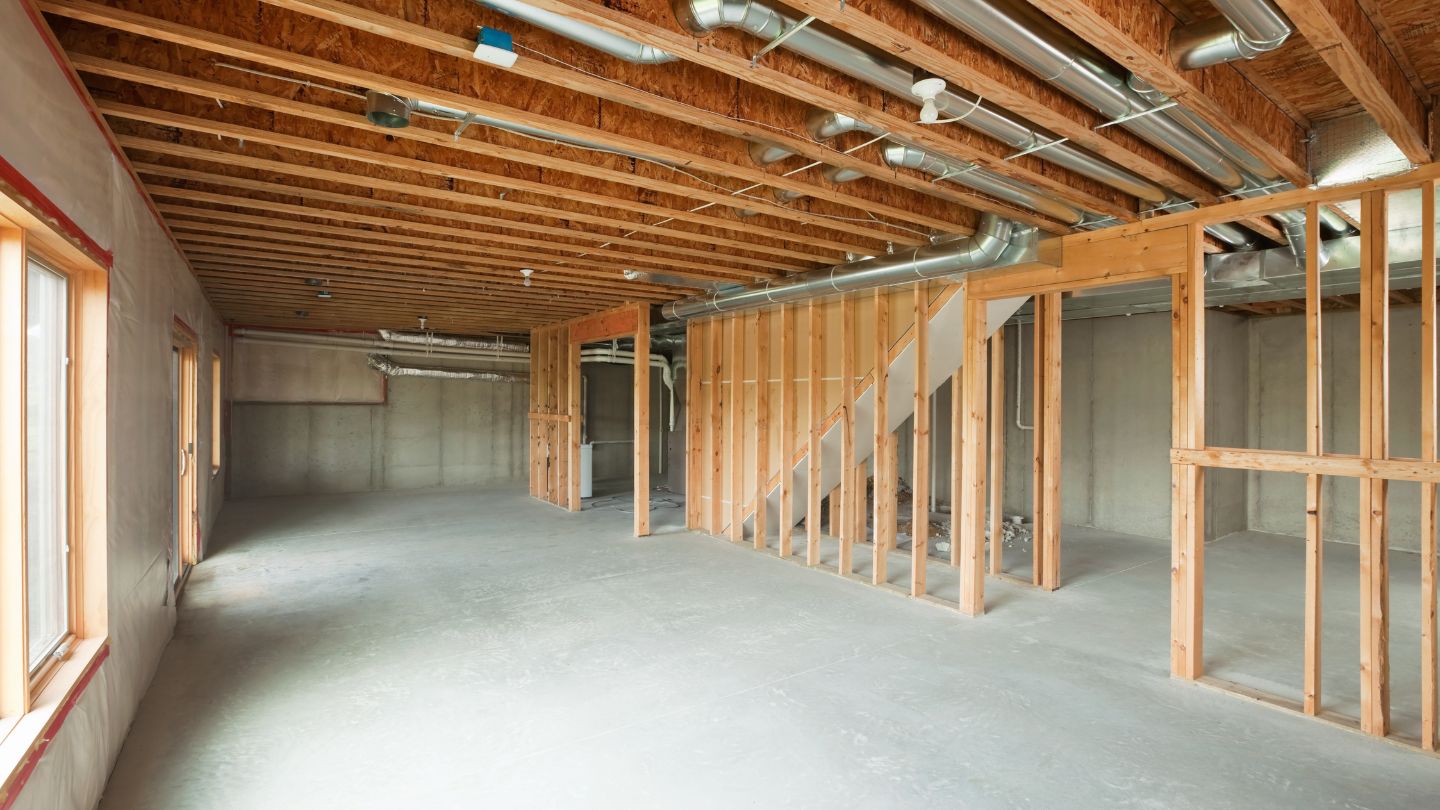Discovering water damage in your basement can be a daunting problem. Whether from a burst pipe, heavy rain, or overflow, understanding how to address and prevent future issues is crucial. Follow this practical five-step guide to repair and safeguard your basement.
1. Ensure Your Basement Is Safe
Safety is paramount when dealing with water damage. Disconnect power, avoid structural weak points, and always wear protective clothing. This precautionary step is vital to prevent accidents and exposure to contaminants.
2. Identify and Stop the Source of Water Damage In The Basement
Identifying and stopping the water source is critical to preventing further damage. A quick response can significantly reduce the impact, whether it’s a leak, seepage, or flood. Regular basement inspections and maintenance can prevent basement floods, addressing common causes like poor drainage or foundation cracks before they escalate.

3. Remove Basement Water and Dry the Damaged Area
Pumps and vacuums effectively remove standing water, followed by dehumidifiers and fans to dry the area thoroughly. Swift action is crucial not only to prevent mold growth but also to mitigate structural weakening. Be mindful of hidden water damage, which can occur behind walls or under floors. Regular monitoring and professional evaluations can help detect these unseen problems.
4. Clean and Disinfect Your Basement
Cleaning and disinfecting the affected areas are essential to restore a healthy environment. This step eliminates harmful bacteria and mold spores, ensuring your basement is dry but also clean and safe.
5. Repair the Water Damage and Restore The Basement
Inspect and repair damages to walls, floors, and furniture. Consider this an opportunity to improve your basement’s resilience, such as enhancing waterproofing or installing a sump pump. These measures are an integral part of water damage restoration and mold prevention, ensuring long-term protection and peace of mind.
Understanding and Preventing Basement Water Damage
Understanding the signs of water damage, like water stains, peeling paint, or musty odors, is crucial for early detection and intervention. Additionally, knowing how to prevent such damage by maintaining your basement and installing preventive measures can save you from future stress and costs.
How Do You Fix Water-Damaged Basement Walls?
Repairing water-damaged basement walls involves several steps:
- Assessment: Begin with a thorough inspection to determine the extent of the damage and whether there is ongoing moisture ingress.
- Stopping Water Ingress: Ensure that the source of water is identified and rectified. This may involve external waterproofing or improving drainage around the foundation.
- Removal of Damaged Material: Strip away any wet or damaged drywall, insulation, paneling, or plaster.
- Drying: Use dehumidifiers and fans to dry out the remaining structure completely.
- Mold Treatment: If mold is present, treat the area with appropriate fungicides and consider hiring a professional for mold remediation if the infestation is extensive.
- Restoration: Replace any damaged materials with mold-resistant products designed for basements. Apply waterproofing paint to the walls before finishing with new drywall or other wall coverings.
What Does Basement Water Damage Look Like?
Basement water damage can present itself in various ways:
- Staining: Water stains on walls and floors are usually the first indicator, appearing as discolorations.
- Efflorescence: A white, powdery substance on concrete walls occurs when water evaporates, leaving mineral deposits behind.
- Mold and Mildew: These appear as black, white, or green spots, often accompanied by a musty odor.
- Peeling Paint or Wallpaper: Bubbling, cracking, or peeling paint or wallpaper is a sign of moisture affecting the wall coverings.
- Warping or Swelling: Wooden elements such as baseboards and panels may warp or swell due to moisture absorption.

Can Basement Water Damage Be Fixed?
Yes, basement water damage can be fixed by:
- Addressing the Cause: Fixing the source of water ingress is crucial to prevent recurring damage.
- Water Removal and Drying: Pump out standing water, and thoroughly dry the area with fans and dehumidifiers.
- Restoration of Materials: Replace damaged building materials with water-resistant options where possible.
- Structural Repairs: In cases of severe damage, structural elements like joists or beams may need assessment and repair by a professional.
How Do You Dry Out a Flooded Basement?
Drying out a flooded basement should be done methodically:
- Pumping Out Water: If the basement is severely flooded, begin by pumping out the water using a sump pump or a wet vac.
- Removing Wet Items: Take out all wet items, including carpets, furniture, and boxes, to be dried or discarded.
- Increasing Airflow: Open windows and use fans to circulate air and assist in the drying process.
- Using Dehumidifiers: Set up dehumidifiers to remove moisture from the air and help dry out building materials.
- Monitoring Moisture Levels: Use moisture meters to ensure that all materials are fully dry before beginning any repairs or restoration.
Call UWRG for Basement Water Damage Repairs
Repairing water damage in your basement requires a systematic approach focusing on safety, quick action, and thorough restoration. By following these five steps, you’re not only repairing the current damage but also enhancing your basement’s defense against future incidents.
For professional assistance and comprehensive water damage restoration services, contact United Water Restoration Group. Our expert team is ready to guide you through the process and provide solutions tailored to your needs.





